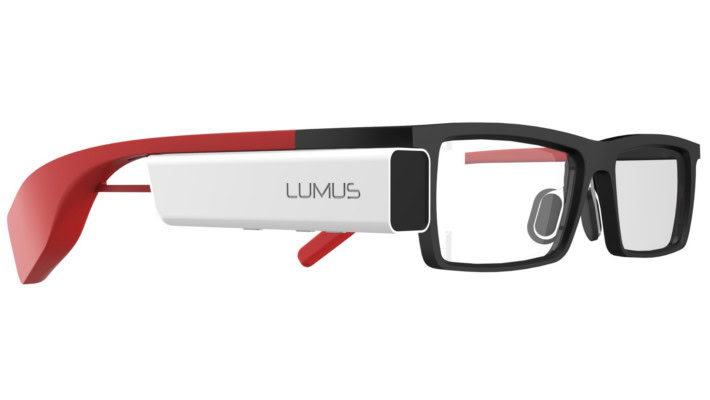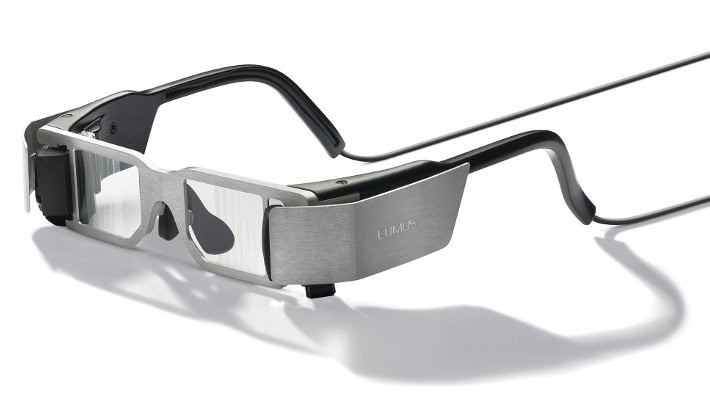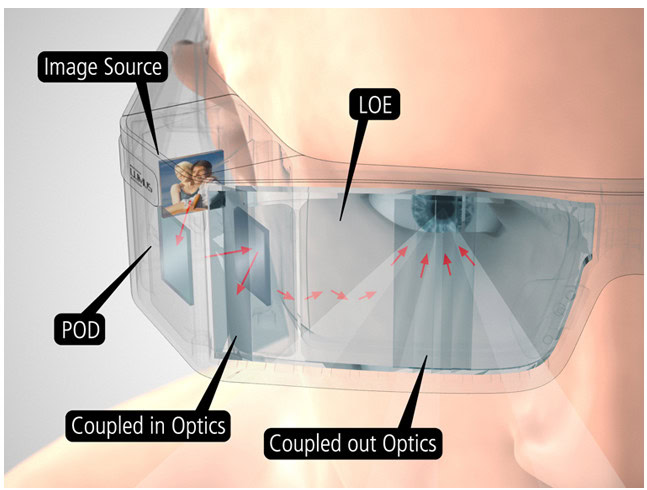Affiliate links on Android Authority may earn us a commission. Learn more.
Lumus - military grade technology in Android powered smart glasses
Published onMarch 9, 2014


You may not have heard of Lumus, but they are on track to teach Google a thing or two in the eyeglass department of modern wearables. If you are an F16 fighter pilot, you probably already know Lumus for the really cool see-through heads-up display attached to your flight helmet. The rest of us get to learn about Lumus, and hope their OEM efforts are successful, as they show off a pair of concept consumer level smart glasses.
Lumus is not exactly looking to get into the wearables market themselves. Their two consumer level smart glasses, the DK-40 single lense and the DK-32 dual lense, are still in development, and may never go into production. Their main focus is to be the supplier of their Optical Engine Module (OEM) to other manufacturers.
Lumus DK-32

The OEM, is Lumus’ sub-assembled unit, combining their micro-display pod and Lumus Light-guide Optical Element (LOE) lens. If I had to generalize all this, I would simply call the OEM a computer display unit. A vendor would therefore need only add frames, a computer and a power source to turn the OEM into glasses. The micro-display pod of the OEM is capable of firing out 720p, 1280 x 720, video. The lense, which is more of an actual eyeglass lense compared to Google Glass‘ display, is only 1.6mm thick and completely see-through. Both Google Glass and Lumus utilize beam splitting in their lenses to direct a projected image toward your eye. Glass has a single splitter, that frosty cube looking thing. Lumus’ lense includes several smaller splitters working as one, which allows it to be thinner, see-through and provide a larger image size.

Lumus’ lense technology is able to display the equivalent of an 87″ screen at 10ft away, covering 40° of your field of view. Due to the lense being 78% transparent, the image is able to sit directly in the center of your field of view, allowing you to see the display and the real world behind it simultaneously.
Aside from military applications, there are a few vendors that have put the Lumus OEM to use. One such wearables maker, Meta, has built a set of dual lense, 3D augmented reality glasses called the Meta Pro. The Meta Pro unit can mirror your smartphone display and functionality, and allows you to control your device using in-air hand gestures. However, Meta Pro encases the Lumus lenses into, what appear to be, oversized dark sunglasses and are suited to laboratory, or living room, use. The inability to wear Meta Pro throughout the day, combined with a $3650 price tag, may not give Google much to worry about, yet.
Google’s Glass does face significant conceptual competition in Lumus’ own DK-40 and DK-32 glasses. Both sets utilize the Lumus OEM – the DK-32 uses the full 720p resolution and 40° field of view video in a dual lense setup, allowing for full 3D immersion. The new DK-40 model is a single lense solution that uses a slightly downgraded VGA resolution over 25° of your field of view. In place of the superior video, they have added motion sensors and a 5MP camera, allowing you to control the device with hand gestures, as well as perform other camera related functions. DK-40 also has a full copy of Android installed, offering a very compelling full computing experience that Glass should be paying attention to.
Lumus DK-40

Here is a short CBS clip on Lumus, featuring head of Business Development Ari Grobman showing off a pair of older DK-32 dual lense glasses. Grobman explains the idea of cutting the wires to the DK-32, making it wirelessly connect to your smartphone – this is exactly what the DK-40 brings to the table.
Lumus offers no timeframe for any consumer ready smart glasses, speculating that most major vendors are watching where Google goes with their Glass. Certainly, Google has experienced the hardships that come with being a pioneer of an industry.
Are you looking forward to eyeglasses being the next wave of wearable technology? Do you think that situating the image in the center of your field of view will prevent all day use of the Lumus glasses?